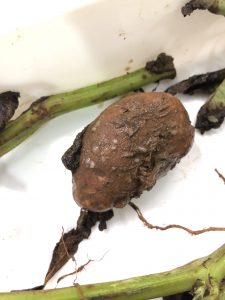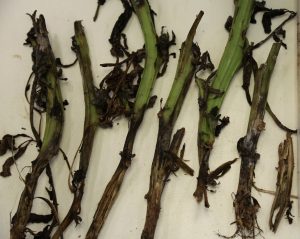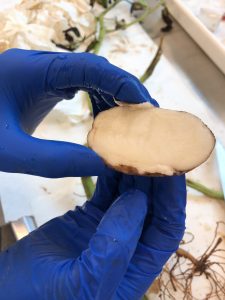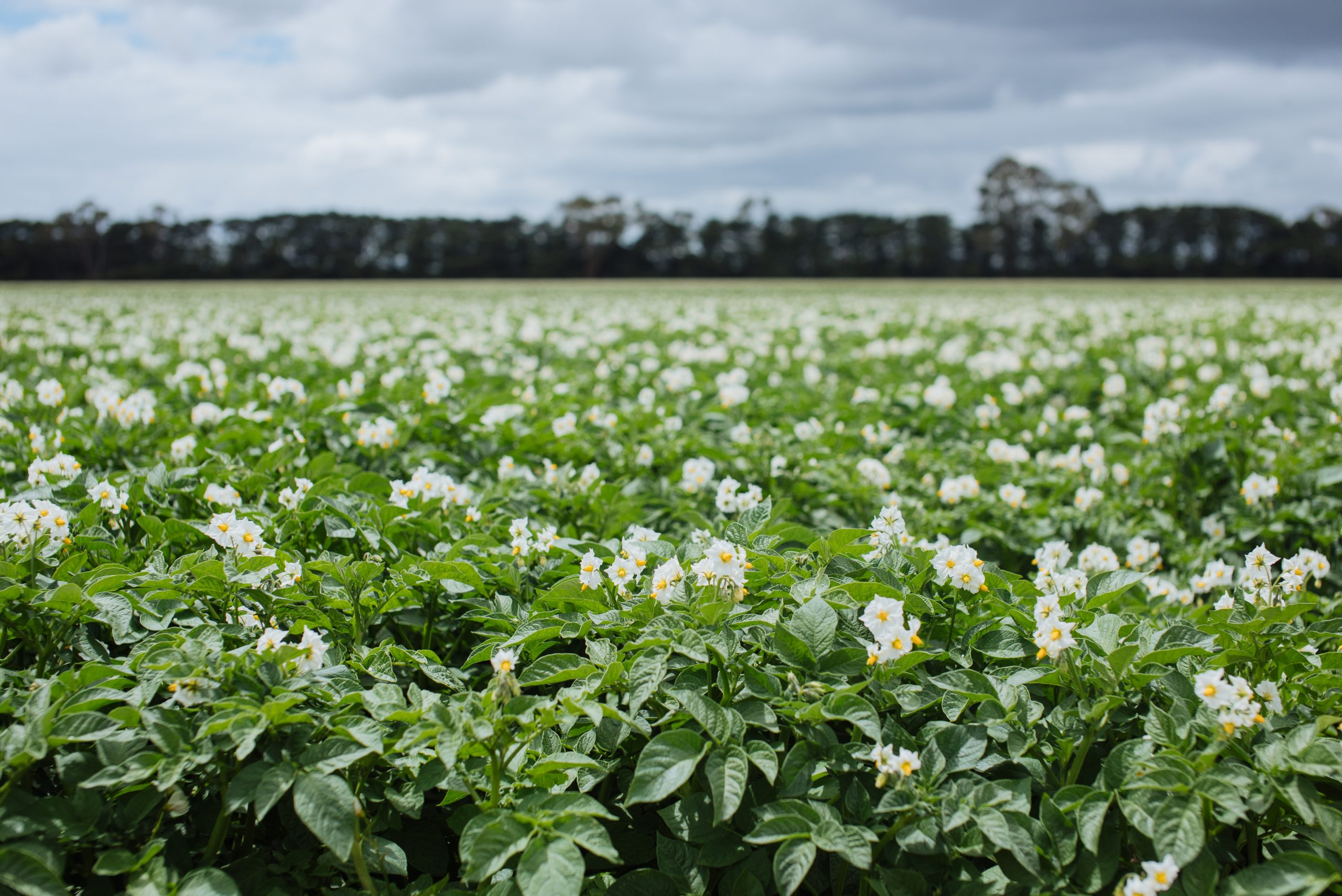Managing blackleg in potato crops
Blackleg is the major cause of potato seed downgrading and rejections in northern Europe. So, what is the issue for Australia? Some species described overseas cause serious potato diseases that have not been recorded in Australia.
Our ‘pest-free’ status is not assured though, for three key reasons:
- There have been few potato crop surveys targeting these pathogens.
- These bacteria have undergone several name changes over the past decades.
- Several newly named species and subspecies have been reported with the use of genetic classification techniques.

The pathogens affect other crops and can be introduced with them or move around the country with them. Bulbs and vegetative plant material imported for the nursery and cut flower industries could be symptomless carriers of some of these bacteria.
What bacteria cause blackleg of potato?
In Australia, we have always referred to blackleg causing bacteria as Erwinia species:
- Erwinia carotovora subsp. atroseptica – Pectobacterium
- Erwinia carotovora subsp. carotovora – Pectobacterium
- Erwinia chrysanthemi – Dickeya
Causes of blackleg in Australia:
- atrosepticum
- carotovorum subsp. carotovorum
- dianthicola – First detected in potatoes in 2017, found in multiple states since.
- carotovorum subsp. brasiliense – First identified in potatoes in 2016 but reclassification of isolates in historical collections indicate that it has been here since the 1960s.
- parmentieri (P. wasbiae) – First identified in potatoes in 2019. Historical collections yet to be assessed.
- polaris
- punjabense
Identification of blackleg-causing species
You cannot differentiate blackleg-causing species visually. Laboratory testing is required for species identification in the form of DNA-based tests and isolating bacteria from the plant.

Identification is important. Blackleg-causing spp. have different optimal growth conditions, e.g. soil moisture and temperature.
Disease cycle and infection
Researchers in the United Kingdom gave identified that seed potatoes are the most important source of inoculum in the blackleg disease cycle. Infected seed potatoes may come from infected fields or may become infected during grading. Bacteria can live in spongey tissue of the tuber without causing disease.
The bacteria become active when environmental conditions are right – then disease occurs.
Disease development
- Blackleg can occur at any time during the growing season.
- Development is favoured by cool, wet conditions at planting followed by warmer weather.
- When infected tissues break down, bacteria are released into the soil and travel in soil moisture to other plants.
- Blackleg causing bacteria do not survive in soil more than a few months; however, they may survive in crop debris, weeds, or volunteer potatoes.
Advice for growers
- Use certified, disease-free seed.
- Plant whole seed rather than cut seed, particularly in regions where tuber soft rot and blackleg diseases have been a problem (e.g. in warm or wet soils).
- Schedule planting to avoid periods when extremely wet conditions or high temperatures prevail.
- Use long crop rotations of 2-8 years, particularly for seed production (persistence in soil will depend on rotation and hygiene).
- Avoid risks of cross-contamination between alternative host crops such as ornamental bulbs or vegetable crops grown in the same fields, or using machinery or personnel that could spread bacteria on a farm e.g. on clothing or equipment. Good hygiene and having no host crops in rotation is important.

Soft rot of potato tuber caused by Pectobacterium parmentieri. - Manage insect pests to avoid physical injuries to tubers, roots and stems that provide entry sites for bacteria.
- Have good nutrition and soil moisture management, maintain optimal calcium and magnesium levels in plants, do not overdo nitrogen, good irrigation management and adequate drainage.
- Maintain good storage conditions for seed and marketable tubers.
Find out more
Please contact Dr Rachel Mann at rachel.mann@agriculture.vic.gov.au or Dr Doris Blaesing at dorisb@rmcg.com.au.
Management options have been summarised by Dr Len Tesoriero, who was Project Lead of PT18000 – Review bacterial blackleg disease and R&D gaps with a focus on the potato industry.
The final report for this project can be found here.
This article features in the autumn 2021 edition of Potatoes Australia. Click here to read the full publication.

